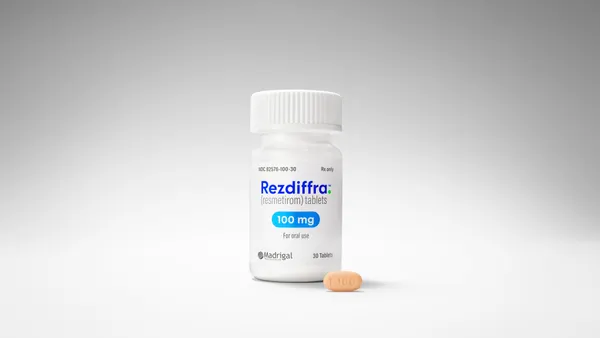Pharma R&D Spending Remains Robust Despite Tough Economy Despite the current economic downturn, pharmaceutical research and development spending continues to play a vital role in the pharmaceutical industry. According to a recent report by CBR Pharma Insights, recent trends indicate a consolidation of efforts through numerous acquisitions, both intra-pharmaceutical as well as purchases of biotechs by big pharma. In addition, pharmaceutical companies are narrowing the focus of their research and development units through a more strategic concentration on key chronic illnesses. Current challenges to FDA approvals have influenced this reduction in the number of products under development. Additionally, there is a greater move toward outsourcing of R&D to growing players outside of the United States and Europe, particularly in China and India. The pharmaceutical industry is the top spender on R&D worldwide, with 30% of R&D budgets being spent on research and 70% on development. Two-thirds of the development costs are focused on recruiting clinical-trial participants and conducting clinical trials. Research and development spending increased by 20% from 2004 to 2007, while simultaneously the number of new molecular entities (NMEs) and novel biologics declined by 50%. Investment in drug and vaccine R&D has remained stable despite the tenuous economy and downsizing in large pharma. R&D spending was at an all-time high of about $65.2 billion in 2008. An estimated $58.8 billion was spent on R&D in 2007, up from $55.8 billion in 2006. Research as a share of growth remained high, at about 18% of sales on average. Currently, more than 2,700 drugs are in development in the United States for an estimated 4,000 indications. For more information, visit cbrpharmainsights.com. Federal Scrutiny of Physicians Could Harm Relationship With Pharma Industry Thought leader management teams are grappling with maintaining productive relationships with key opinion leader (KOL) physicians as they adapt to increasingly restrictive guidelines and demands for transparency. Relationships between physicians and the pharmaceutical industry have been under fire for a number of years, but federal scrutiny of these relationships has escalated as the need to lower healthcare costs increases and the public’s negative image of the industry grows more intense. Consultation from leading physicians and researchers is a crucial part of producing effective drugs. But the growing regulatory and prosecutorial scrutiny could seriously impact a relationship vital to medical advancement, as KOLs become wary of working with the industry in fear that published connections will harm their practices and reputations. According to Cutting Edge Information’s recent report on maintaining relationships with thought leaders, pharmaceutical and other companies in the industry should be proactive in implementing policies and procedures that will protect both themselves and the physicians who work with them. To compete for KOLs, even in the midst of seemingly overwhelming pressure, teams must be proactive and their thought leader development well-coordinated and focused. A thought leader development department should be a strong consideration, particularly for small companies, early in the development cycle. With a dedicated department in place from the start, a small company can begin documenting all thought leader interactions. Thought leaders are integral to guiding the development process and clinical direction of companies, and detailed documentation helps identify the most and least influential thought leaders working on a given project. A dedicated department also will help protect and cultivate valuable thought leader relationships for use in the development of future drugs. For more information, visit cuttingedgeinfo.com. Sales Executives Recommend Less Texting Today’s real-time communication technologies can provide salesforces with a competitive advantage and the ability to quickly deliver valuable information to clients. But abusing real-time communication tools like instant messaging, texts, and mobile e-mail can hinder the ability of sales reps to engage with physicians. “A lot of people at our company believe that multi-tasking makes them more efficient," said one sales executive during a roundtable discussion recently conducted by Best Practices’ Global Benchmarking Council. “In reality, they’re so distracted by doing four things at once that the quality of their work across all fronts is poor." At most companies, the largest culprit of unnecessary communication are e-mails, generally from corporate functions that are giving the salesforce nice-to-know rather than need-to-know information. According to roundtable participants, functions that wish to send information to more than 5% of the salesforce should be required to make a case as to whether the information is essential so as not to squander valuable sales time. For example, if an irrelevant e-mail is sent to 5,000 salespeople and wastes two minutes of their time, the lost selling time is 167 hours. For more information, visit best-in-class.com. Health Is the New Wealth in Times of Economic Crisis Against a background of economic uncertainty, people across the globe are beginning to feel vulnerable not only in terms of their wealth, but also their health. Research recently conducted by DDB Health Worldwide and M/A/R/C Research reveals that the value people place on their health and the amount of time they spend thinking about it increases as their household income decreases. The study, Health is the New Wealth, compares perceptions about health among more than 1,800 consumers and physicians in 11 countries: the United States, Canada, Mexico, Brazil, the United Kingdom, France, Germany, China, India, Australia, and Singapore. According to the report, 42% of those surveyed ranked health as a major preoccupation while 31% made “living without illness" their first health priority. Conversely, only 9% ranked “achieving my potential" as a priority. Respondents expressed a general sense of optimism in that they believe they will remain healthy over the short term (the next five years). But when asked about their health 15 years from now, respondents were less confident, with 42% believing they will be less healthy than they are at present. When narrowed to respondents age 55 and above, their views as to their prospects for health in the near term (five years), as well as further out (15 years), matched those of respondents overall, with at least 30% hope that their bodies will remain, for the most part, vital into their 70s and beyond. “Recognizing they must be healthy in order to make things go their way again, people are regressing to the fundamental: specifically, what they need and not necessarily what they want," says Mark Goldstone, president of DDB Health Worldwide. “There are huge implications for both purchasing and motivation here." “Consumers are not going to be as motivated to take action based solely on higher-order/emotional end benefits in the pharmaceutical, or even in the well-being, space," adds DDB Director of Brand Planning Maria Tender. “Today, more than ever, they will need to see tangible benefits ascribed to brands." For more information, visit ddb.com. Need for Safe, Affordable Biopharmaceuticals Drives European Biosimilars Market The number of biosimilars in the European market is set to increase gradually. According to the Frost & Sullivan report, European Biosimilars Market Outlook, biologic product classes that have lost patent protection in Europe — erythropoietins, insulin and analogs, granulocyte colony-stimulating factors, human growth hormones, and interferons — had a collective market size of about $34.04 billion in 2007. Expensive biopharmaceuticals are used primarily for critical diseases like cancer and diabetes, the incidences of which are increasing as Europe’s population ages. Subsequently, the patent expirations of key product classes and an increasing emphasis on cost containment are motivating governments to switch to affordable alternatives, providing a tremendous growth opportunity for biosimilar manufacturers. In addition, payers’ perception of biosimilars as viable alternatives to originator drugs due to their safety, efficacy, and affordability is expected to further bolster market prospects. But the development of biosimilars is riddled with complexities, ranging from research and development and manufacturing to marketing. Their development remains one of the lengthiest and most expensive propositions in the pharmaceutical industry, and meeting the stringent regulatory norms set by the European Medicines Agency (EMEA) can be an arduous exercise. Marketing presents another key challenge, as typically there is initial resistance from the physician community to adopting biosimilars. According to the report, pricing will be a key factor to recover the high level of investment that is required to develop and manufacture biosimilars. In addition, marketing strategies will have to be very different from generic drugs. “While pricing a biosimilar, manufacturers must assess various factors such as the nature of the market, product class, level of competition, and reimbursement structure," says Frost & Sullivan Senior Research Analyst Sumanth Kambhammettu. “As current biosimilars are marketed in the hospital sector, manufacturers must focus their marketing efforts on specialists to increase the probability of success. Moreover, they must make efforts toward advancing physician awareness by disseminating data pertaining to long-term safety and efficacy of biosimilars." For more information, visit frost.com. June 2009 PharmaTrax PharmaVOICE
An article from










